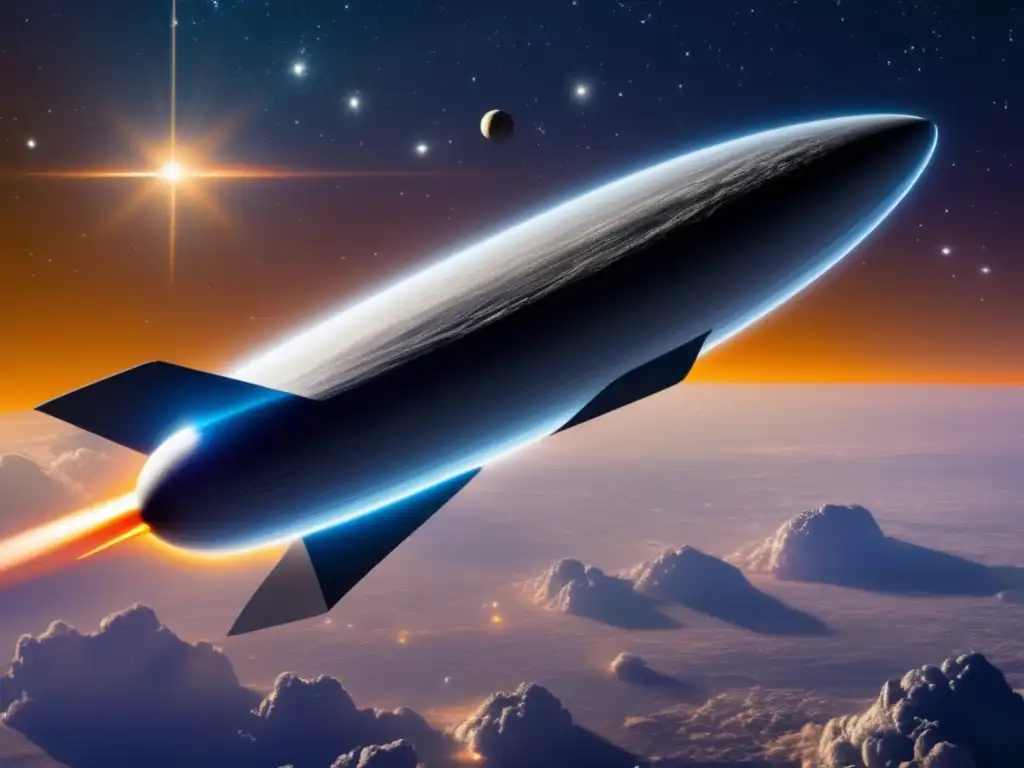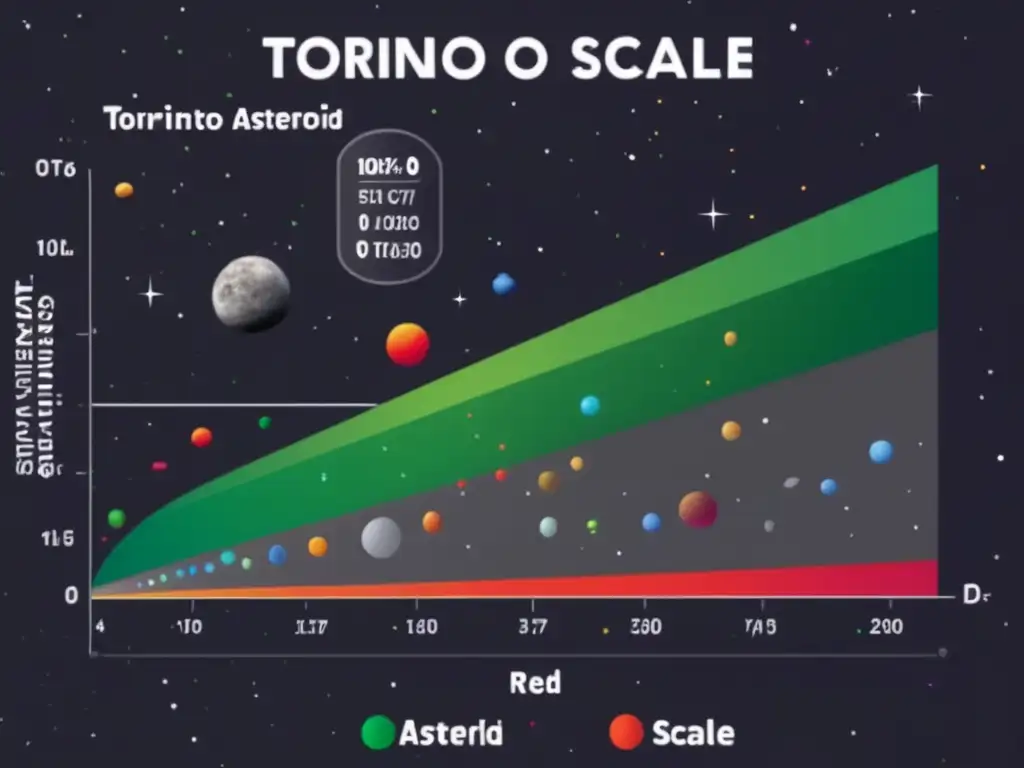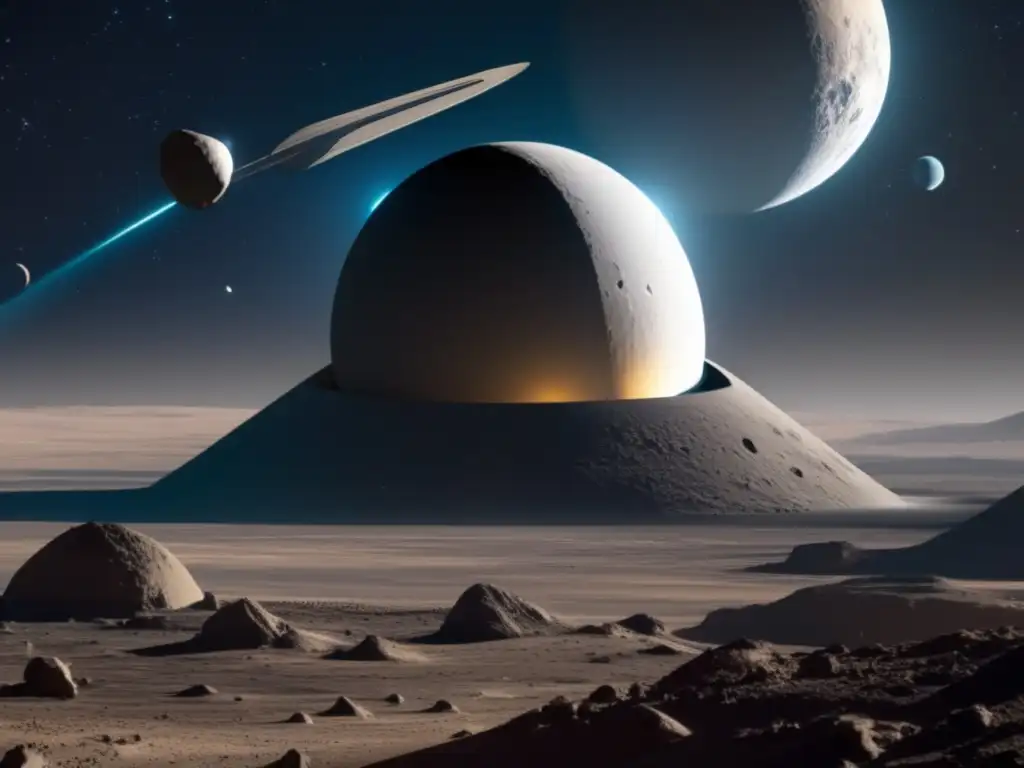Icarus: The Asteroid That Inspired The Torino Scale

Introduction
Asteroids have played an important role in human history since ancient times. They have fascinated scientists and astronomers alike for centuries, who have studied their origin, composition, and impact on Earth. One asteroid that has been of particular interest since its discovery in 1949 is Icarus, which inspired the creation of the Torino Scale - a way to measure the potential impact hazard of asteroids.
The Discovery of Icarus

The Early Years
Icarus, also known as 1566 Icarus, was discovered on June 22, 1949, by Walter Baade at the Palomar Observatory in California. It is a near-Earth asteroid with an eccentric orbit that crosses the orbits of Mercury, Venus, Earth, and Mars. At its closest approach to Earth, it can get as close as 6.4 million kilometers (4 million miles). Its name comes from the Greek mythological figure Icarus, who flew too close to the sun and fell to his death.
The Torino Scale
In 1995, NASA scientist Richard P. Binzel developed the Torino Scale as a way to communicate the potential impact hazard of asteroids with the public. It is named after the city of Turin, Italy, where the first conference on asteroid impact hazards was held in 1999. The Torino Scale ranges from 0 to 10 and takes into account the probability of impact, the estimated size of the asteroid, and the potential damage that could be caused. Icarus was the first asteroid to rate a score on the Torino Scale.
The Impact of Icarus
In 1968, Icarus made a close approach to Earth, coming within 5 million kilometers (3.1 million miles), which at the time was the closest known approach by any asteroid. Its size and orbit were still not well known, so it was difficult to predict if it posed any danger to Earth. However, its proximity caught the attention of astronomers who began to study it in more detail.
The Physical Characteristics of Icarus

Size and Composition
Icarus is classified as an Apollo asteroid, which means it has an orbit that comes close to or crosses Earth's path around the sun. It has an estimated diameter of 1.4 kilometers (0.87 miles) and is composed of rocky material similar to Earth and Mars. Its surface is heavily cratered and shows signs of regolith - the layer of loose soil and rock that covers many asteroids and moons throughout the solar system.
Rotation and Orbit
Icarus has a rotation period of 2.3 hours, which is one of the fastest known among asteroids. Its orbit is highly elliptical, with a semi-major axis of 1.08 AU and a perihelion distance of 0.19 AU. The eccentricity of Icarus' orbit causes it to experience large temperature variations, which can cause the asteroid to fragment and break apart over time.
Potential Impact Hazards
Icarus is classified as a potentially hazardous asteroid due to its size and orbit. If it were to collide with Earth, it could cause significant damage to the planet and its inhabitants. However, the chances of this happening are relatively low. The estimated probability of Icarus impacting Earth in the next 100 years is less than 1 in 10,000.
The Future of Icarus

Observations and Missions
Due to its complex and irregular orbit, Icarus is difficult to observe and study. However, NASA's OSIRIS-REx mission, which launched in 2016, will make a close flyby of the asteroid in 2029, which will provide scientists with valuable data on its composition and structure. Additionally, ground-based telescopes such as the Vera C. Rubin Observatory will continue to monitor the asteroid for potential impact hazards.
Potential Mining Target
Icarus' proximity to Earth and its rocky composition make it a potential target for future asteroid mining missions. The asteroid's resources could be utilized in space exploration and settlement, including precious metals, water, and other valuable materials.
The Need for Continued Research
Despite the low probability of Icarus colliding with Earth, continued research and monitoring of the asteroid are essential for early detection and mitigation of potential impact hazards. It is crucial to understand the physical characteristics and behavior of near-Earth asteroids like Icarus to develop effective strategies for planetary defense and resource utilization.
Frequently Asked Questions

-
What is the Torino Scale?
The Torino Scale is a way to measure the potential impact hazard of asteroids based on their size, probability of impact, and potential damage that could be caused.
-
Why is Icarus important?
Icarus was the first asteroid to rate a score on the Torino Scale, and its proximity to Earth in 1968 caught the attention of astronomers who began to study it in more detail.
-
What is the composition of Icarus?
Icarus is composed of rocky material similar to Earth and Mars.
-
What is the potential impact hazard of Icarus?
If Icarus were to collide with Earth, it could cause significant damage to the planet and its inhabitants. However, the estimated probability of this happening in the next 100 years is less than 1 in 10,000.
-
What is the future of Icarus?
Icarus will be the target of NASA's OSIRIS-REx mission in 2029, which will provide scientists with valuable data on its composition and structure. Additionally, it could be a potential target for future asteroid mining missions.
Conclusion
Icarus is a fascinating asteroid that has played an important role in the study of near-Earth asteroids and their potential impact hazards. Its discovery inspired the creation of the Torino Scale, a way to communicate the potential impact hazard of asteroids with the public. Continued research and monitoring of Icarus and other near-Earth asteroids are crucial for our understanding of their physical characteristics and behavior and the development of effective strategies for planetary defense and resource utilization.
We encourage our readers to share their thoughts about Icarus and the importance of asteroid research in the comments section below. Please reach out to www.asteroidrealm.com if you have any questions or would like to learn more.
Additional Resources

- NASA - Torino Scale
- Icarus - Physical Characteristics and the Detection of Rotation
- NASA - OSIRIS-REx Ephemeris Data Shows Asteroid Icarus Flyby Will Be Close
 Discovering The Secrets Of Asteroid Lycaon
Discovering The Secrets Of Asteroid Lycaon A Deep Dive Into 101955 Bennu: OSIRIS-REx And The Quest For Samples
A Deep Dive Into 101955 Bennu: OSIRIS-REx And The Quest For Samples Telemachus: Its Role And Importance In Astronomy
Telemachus: Its Role And Importance In AstronomyIf you want to discover more articles similar to Icarus: The Asteroid That Inspired The Torino Scale, you can visit the Asteroid Profiles category.
Leave a Reply

Articulos relacionados: